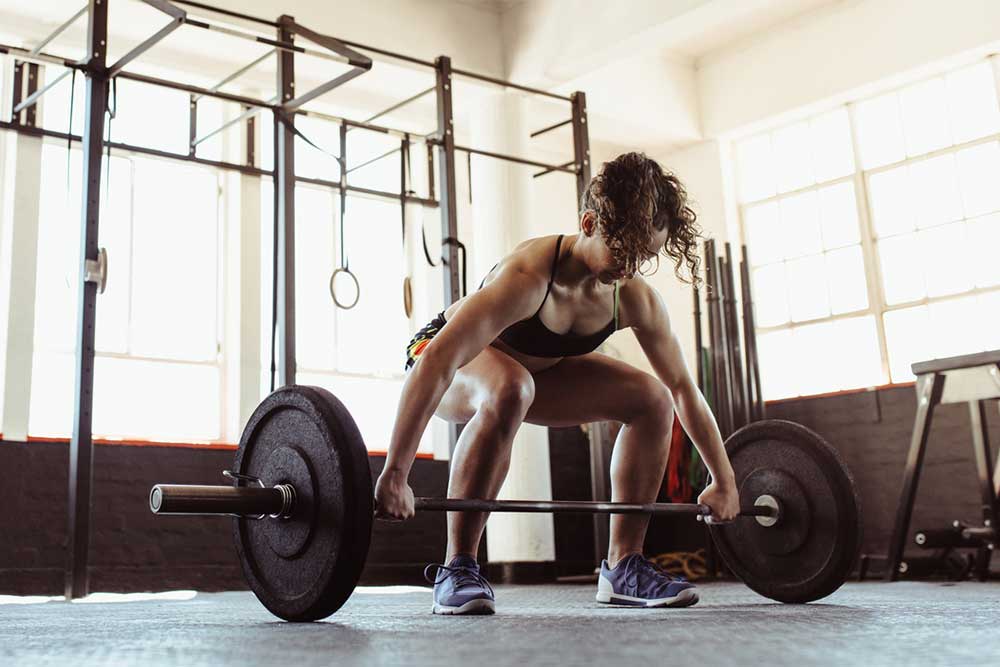A Win-Win Combination – Intervals Vs Endurance (Part 6)

Evan Stevens
We’ve seen that HIIT (shorter, highly strenuous bursts of activity separated by periods of low intensity or rest) and CEE (a continuous bout of exercise without a break interval and can be performed at low, moderate, or high intensities) do basically the same thing, relatively speaking. They both tax our aerobic system, they improve our overall conditioning and have protective effects on the ageing brain. So they must be doing the same thing, right? Well, a closer look at either of them shows that while they may end up doing very similar things, on a molecular level they are two completely different pathways.
If we can summarize the main physiological outcomes of aerobic exercise, both high volumes, continuous and high intensity, intermittent, would be as follows:
- Increased fat oxidation
- Increase GLUT 4 production and recruitment, better use of glycogen
- Increased Mitochondrial density
- Increased slow-twitch muscle fiber function.
Related Article: How HIIT Changes Our Body
CEE vs HIIT
CEE achieves these outcomes by an entirely different molecular pathway than HIIT. CEE works through the calcium channels, specifically through Calcium-Calmodulin Protein Kinase (CaMK). These are activated by an increase in the amount of calcium within the cell, and they transfer a phosphate from ATP to other enzymes or proteins. Activated CaMK phosphorylates (adds a phosphate) transcription factors, regulating the expression of genes which explains how exercise can regulate the increase in certain physiological functions – by modulating genes.
Related Article: 90 Seconds A Day Of HIIT Might Be All You Need
 HIIT acts through a similar but completely different pathway. Adenosine monophosphate protein kinase (AMPK) is a protein kinase that is activated in the presence of ATP and like any kinase acts to phosphorylate something, be it a gene or protein or enzyme, much like CaMK.
HIIT acts through a similar but completely different pathway. Adenosine monophosphate protein kinase (AMPK) is a protein kinase that is activated in the presence of ATP and like any kinase acts to phosphorylate something, be it a gene or protein or enzyme, much like CaMK.
However, during acute bouts of exercise, it activates an enzyme called hexokinase II which is responsible for the creation of hexose phosphate. Glucose, as we know, is the most important hexose, or six-sided sugar, and glucose 6-phosphate is the most important breakdown product as it can be used to make energy through glycolysis (anaerobic) or enter oxidative phosphorylation (aerobic). It can also increase the movement of GLUT 4 to the cell membrane, which further increases glucose utilization.
On top of that, it has been linked to increase blood flow to working muscles by promoting vasculo-and angiogenesis (growth and formation of blood vessels). AMPK is also responsible for the training adaptation switch to increasing fatty acid oxidation for ATP production. These processes are maintained through aerobic work because of the sustained levels of ATP being produced. This all shuts off when ATP goes away and there is an increase in ADP and AMP (adenosine diphosphate and adenosine monophosphate) which limits the ability of AMPK to phosphorylate its targets.
Related Article: 6 Cures For Sore Muscles After HIIT
Both CaMK and AMPK end up doing the same thing because they will both activate peroxisome proliferator-activated receptor-g coactivator-1α (PGC-1α). PGC-1α is the master regulator for mitochondria biogenesis – it controls the growth and division of mitochondria in response to exercise. By increasing PGC-1α we finally see the actual performance outcomes of training. More mitochondria = more energy produced more efficiently = more energy to fire our muscles more often = better performances. CEE and HIIT each improve performance outcomes in slightly different ways.
So, What’s Better?
We’ve finally arrived at our destination. Now that we have a (somewhat) firm grasp of the differences between continuous endurance exercise and high intensity interval training, we can definitively say that one is better right? Well, not really. Right now the research is undecided. There is slight lean towards HIIT being better as research has shown that it can provide physiological changes similar or slightly better than CEE. What should be considered is if these changes are significant (for the most part, no) and considering our own individual training and performance goals before declaring one training philosophy better than the other.
As they both stress the aerobic system, they can both be used to “get fit,” it is just a matter of how disciplined we are and how much time we have.
- Have lots of time? Don’t want to work as hard? Want exercise to be enjoyable? Main goal to lose some extra fat?
- A little stressed on time? Want to work super hard? Less worried about your fat content and more about your performance? Give HIIT a chance.
Now that we have that out of the way, if you are a true athlete, I would suggest doing BOTH. Incorporating both a CEE and HIIT protocol into your workout regimen is going to give you the best outcome regardless of doing one or the other. Top athletes around the world prescribe to this philosophy and there are numerous reasons why doing both is going to help.
Each exercise protocol has its own set of unique benefits – CEE offers a more powerful heart leading to increased total output; HIIT offers a greater increase to peak performance and a strong “afterburn” effect that modulates training adaptations and fuel utilization.
As well, doing hard intervals every single day is going to burn you out, both mentally and physically. We learned that HIIT heightens your “pain” emotions and puts a lot of strain on your body and muscles – HIIT demands a lot from the body and over time this is going to cause burn out issues or injury issues. Solely doing HIIT can cause some interesting side effects like a prolonged fight-or-flight response. Perpetually sweaty palms, increased heart rate, difficulty sleeping, and a host of other anxiety-like symptoms can wreak havoc on someone’s immune system as well as impair recovery which can result in faster burn out. By breaking up your HIIT sessions with CEE you are getting the best of both worlds while still maintaining proper recovery.
Use the CEE as your recovery – you do not need to go hard. All the benefits of CEE can be achieved at 50-60% VO2max/ max heart rate, which isn’t much more than a leisurely jog for most. An excellent system that has worked wonders for myself and other middle distance athletes like myself is:
- Monday: HIIT session
- Tuesday: CEE + strength session (weights)
- Wednesday: Hard HIIT session
- Thursday: CEE + Strength
- Friday: Short and Fast HIIT session
- Saturday: REST
- Sunday: CEE
Your hard days are hard and your easy days are just mileage. This promotes adequate recovery while receiving the benefits of both higher intensity intervals and continuous endurance exercise. It’s a win-win.
Related Articles:
The Brain Effect – Intervals Vs Endurance (Part 5)
The Case For CEE – Intervals Vs Endurance (Part 4)
Why HIIT Excels – Intervals Vs Endurance (Part 3)
Why Is HIIT Different? – Intervals Vs Endurance (Part 2)
Clash of The Titans – Intervals vs Endurance (Part 1)You Might Like:
How Prolonging Your Athletic Career Impacts Longevity
Evan Stevens Athletes are put under a microscope from the moment they take their first steps into the limelight. Statistics track their every move, from strict performance metrics such as save percentages, shots on goal,...Reaction Time Test: Improving Your Time
Evan Stevens Aging sucks. While some argue that aging is a wonderful part of life, that it gives us experience and allows us to better know ourselves, at the end of the day, it really...Relative Energy Deficiency: Nutrition For Endurance Athletes
Evan Stevens Speak with any endurance athlete and the topic of conversation almost always steers towards nutrition. Endurance athletes are the pickiest, most finicky bunch you will ever meet, from the over health conscious “I...The 7 Myths of Weightlifting
Evan Stevens There are common utterances when the conversation shifts to weightlifting and why people don’t do it. More so than any other form of exercise, lifting has a near infuriating amount of misinformation and...What is a High-Intensity Interval Training (HIIT) Workout Anyway?
Evan Stevens High-Intensity Interval Training (HIIT) is a huge ‘hit’ with exercise researchers and the general population alike. It is less time consuming and can imbue the same if not more benefits as traditional exercises...Do Ketogenic Diets Reduce Anaerobic Performance?
Evan Stevens Ketogenic diets have come to the forefront of popular health fads in the past few years. Placing the majority of our health and dietary problems on carbohydrates (due to the spike in blood...Billat, L.V. 2001. Interval training for performance: A scientific and empirical practice. Special recommendations for middle- and long-distance running. Part I: aerobic interval training. Sports Medicine, 31 (1), pp.13-31.
Børsheim, E. and Bahr, R. (2003). Effect of Exercise Intensity, Duration and Mode on Post-Exercise Oxygen Consumption. Sports Medicine, 33(14), pp.1037-1060.
Burgomaster, K.A., et al. 2008. Similar metabolic adaptations during exercise after low volume sprint interval and traditional endurance training in humans. Journal of Physiology, 586 (1), pp.151-60.
Daussin, F., Zoll, J., Dufour, S., Ponsot, E., Lonsdorfer-Wolf, E., Doutreleau, S., Mettauer, B., Piquard, F., Geny, B. and Richard, R. (2008). Effect of interval versus continuous training on cardiorespiratory and mitochondrial functions: relationship to aerobic performance improvements in sedentary subjects. AJP: Regulatory, Integrative and Comparative Physiology, 295(1), pp.R264-R272.
Foster, C., Farland, C., Guidotti, F., Harbin, M., Roberts, B., Schuette, J., Tuuri, A., Doberstein, S. and Porcari, J. (2015). The Effects of High Intensity Interval Training vs Steady State Training on Aerobic and Anaerobic Capacity. Journal of Sports Science and Medicine, 14(4), pp.747-755.
Gibala, M. 2009. Molecular responses to high-intensity interval exercise. Applied Physiology, Nutrition, and Metabolism, 34 (3), pp.428-32.
Harada, C., Natelson Love, M. and Triebel, K. (2017). Normal Cognitive Aging. Clinical Geriatric Medicine, 29(4), pp.737-752.
Heffernan, A. (2017). Steady-State Cardio Vs. High-Intensity Interval Training. [online] Experience Life. Available at: https://experiencelife.com/article/steady-state-cardio-vs-high-intensity-interval-training/ [Accessed 22 Nov. 2017].
Helgerud, J., Hoydal, K., Wang, E., Karlsen, T., Berg, P., Bjerkaas, M., Simonsen, T., Helgesen, C., Hjorth, N., Bach, R. and Hoff, J. (2007). Aerobic High-Intensity Intervals Improve VO2max More Than Moderate Training. Medicine & Science in Sports & Exercise, 39(4), pp.665-671.
Laforgia, J., Withers, R. and Gore, C. (2006). Effects of exercise intensity and duration on the excess post-exercise oxygen consumption. Journal of Sports Sciences, 24(12), pp.1247-1264.
Perry, C., Heigenhauser, G., Bonen, A. and Spriet, L. (2008). High-intensity aerobic interval training increases fat and carbohydrate metabolic capacities in human skeletal muscle. Applied Physiology, Nutrition, and Metabolism, 33(6), pp.1112-1123.
Piepmeier, A. and Etnier, J. (2015). Brain-derived neurotrophic factor (BDNF) as a potential mechanism of the effects of acute exercise on cognitive performance. Journal of Sport and Health Science, 4(1), pp.14-23.
Scott, C. and Kemp, R. (2005). Direct and indirect calorimetry of lactate oxidation: implications for whole-body energy expenditure. Journal of Sports Sciences, 23(1), pp.15-19.
Tabata, I., Nishimura, K., Kouzaki, M., Hirai, Y., Ogita, F., Miyachi, M. and Yamamoto, K. (1996). Effects of moderate-intensity endurance and high-intensity intermittent training on anaerobic capacity and VO2max. Medicine & Science in Sports & Exercise, 28(10), pp.1327-1330.
Willey, J., Gardener, H., Caunca, M., Moon, Y., Dong, C., Cheung, Y., Sacco, R., Elkind, M. and Wright, C. (2016). Leisure-time physical activity associates with cognitive decline. Neurology, 86(20), pp.1897-1903.
















